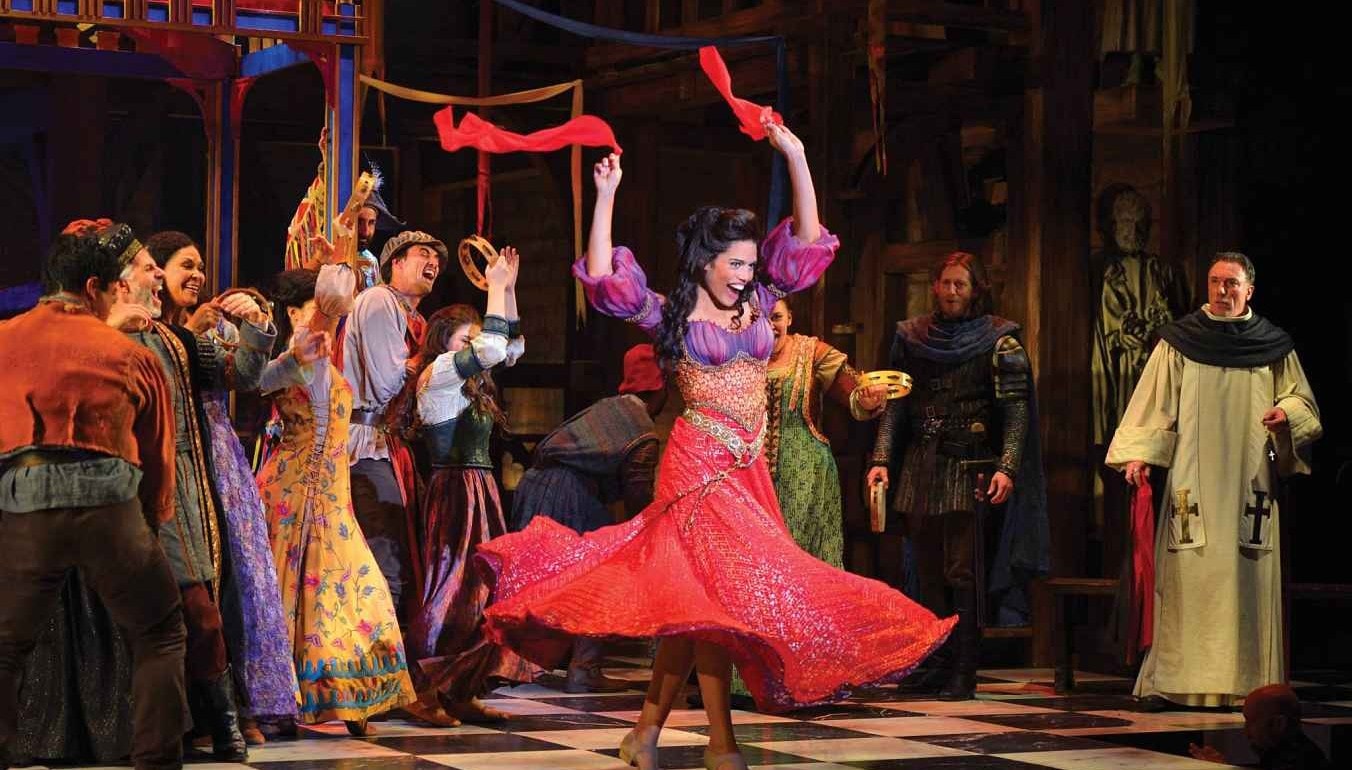MILLBURN, N.J.: Sexual desire, arrest and attempted murder don’t exactly sound like the makings of a Disney animated feature—and that’s why Peter Parnell thinks The Hunchback of Notre Dame has thus far been a “neglected gem” in the Mouse’s canon. So when he was approached to pen the book for a new musical stage adaptation of the story, Parnell jumped at the chance.
“We’re interested in doing something that is more intimate in terms of the relationships between the four main characters,” says Parnell. Victor Hugo’s 1831 novel, more than the various film versions, served as his jumping-off point for telling the story of bell tower–dwelling Quasimodo and his unrequited love for Esmerelda, who in turn finds herself the object of obsession to Claude Frollo, the cathedral’s archdeacon.
“It’s not really material meant for children—it’s quite dark,” concedes the musical’s director, Scott Schwartz. “That’s not to say that it couldn’t be for families and for kids, but we shouldn’t be trying to appeal to a young audience with the material.”
All the same, the new Hunchback incorporates all but one of Alan Menken and Stephen Schwartz’s songs from the 1996 Disney movie, as well as new and reworked songs by the composer and lyricist. The show, which had its U.S. premiere at California’s La Jolla Playhouse last October, will play at New Jersey’s Paper Mill Playhouse Mar. 4–Apr. 5.
“One thing that’s amazing about the film is how adult it already is,” explains Schwartz. “The song ‘Hellfire,’ which is basically about Frollo’s sexual obsession over Esmerelda—that’s in the movie! There are no changes in that song from the movie to our show!”
This isn’t the first theatrical adaptation of the material, of course. James Lapine penned a version which premiered in Berlin in 1999, and Parnell has looked at Lapine’s work in the creation of his own adaptation. Parnell actually attended the New York premiere of the Disney film some 19 years ago because Tom Hulce, who voiced Quasimodo, is one of his “oldest and dearest friends.”
Known for his stage adaptations of books—perhaps most notably for John Irving’s The Cider House Rules—Parnell took the liberty of incorporating extended passages from the novel, using ensemble members as townspeople who have come together to tell the story. Schwartz is also a big fan of the film, and to make the intimate story of four characters feel bigger, his production incorporates a full choir (the plan is to use an actual local choir for each incarnation of the show).
“It’s a big story—it has a great sweep,” Schwartz notes. “The production tries to evoke the feeling of the Cathedral of Notre Dame, so there is a grandness to the whole affair. But don’t get me wrong—there’s an intimacy about it, too.”


